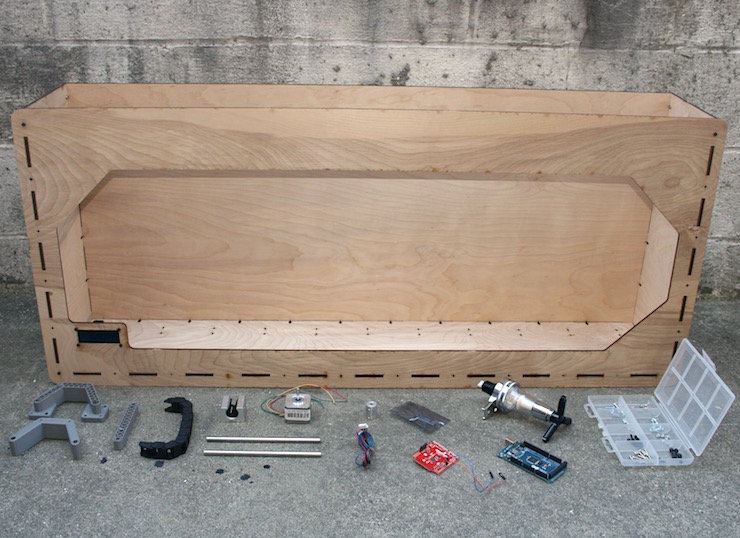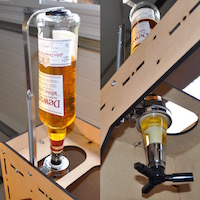If you’re looking to make a DIY Liquor dispenser the Sir Mix a Bot Kit might be a great option for you. Included in the kit is a host of parts and a complete instruction set for everything you’ll need to make a completely automated robot bartender.



Alternative DIY Liquor Dispensers
Of course, we understand if you’re looking for alternate DIY projects, or simply want something a bit more challenging there are a host of alternatives out there. We’ll examine a few different general options and then comment on how we’d rate the cost, level of effort, difficulty to complete, aesthetic finish, and finally the core functionality. Rather than focus on specific machines, we focused on these more generalized categorizations.
The Pinterest Style Liquor Dispenser Made from Faucet Parts.
Photographed below, this single drink dispenser can be found all over Pinterest and Etsy. These DIY liquor dispensers all share a few things in common: A wooden base, plumbing parts, and a hand turned spount or spigot.
- Level of Effort: Easy. To completely assemble a rustic looking dispenser is actually fairly easy. Without electronic parts and only a few items to screw together, most DIYer’s can bolt together the entire assembly in less than a few hours. The baseboard itself can be as intricate as the end-user wants it. While some will use custom mills and multiple stains, more basic versions rely on just a simple square cut of wood.
- Aesthetic Finish: Great. The Etsy style rustic DIY liquor dispensers look great and can suit a variety of homebars. Furthermore, unlike other projects, the dispensers can be built to either house single dispensers, or multiple nozzles.
- Functionality: Poor. The dispenser does pour liquid once the spout is opened, but beyond that its worse than other projects on here. The alcohol doesn’t come out in metered quantities, nor does it automatically combine or disperse the liquor. In fact because volume control is so haphazard, we might rate the functionality worse than the liquor bottle itself.
The Home Made Arduino Powered Robot Bartender.
There’s a host of other robotic bartender projects that have come beforehand. A quick internet search for “DIY Robotic Bartender” will yield all sorts of half-baked or experimental projects.
- Level of Effort: Hard. To completely assemble this Arduino powered cocktail machine be prepared for a few headaches. Firstly, you’ll need to source the semi-custom parts. Most of these online projects don’t include pre-cut pieces, but ask the user to “build something that similar”. Then be prepared to use 3d printers, CNC routers or cutters, or other specialty equipment to finalize those highly custom parts. Its not like your local hardware store is used to building robotic bartenders.
Once you’re done with the Hardware be prepared to contend with the software. While the parts worked fine in the YouTube video, Arduino’s and other microcontrollers tend to be very voltage and load sensitive. Without rigorous testing its unlikely that reassembling similar components will end up with plug-n-play results.
- Aesthetic Finish: Bad to Medium. Would you be proud to showcase the 2′ x 4′ contraption above? Neither would we. The robotic projects we’ve examined fall into two general categories: Either so basic they result in ugly designs, or ornate and beautiful custom machined designs that cost a fortune. Finding a balance between expense and ugly is difficult.
- Functionality: Bad to Great. While the bot above can make you a drink through the peristaltic pumps, other bots have full WiFi and BlueTooth connectivity, as well as the ability to devise new drinks.


